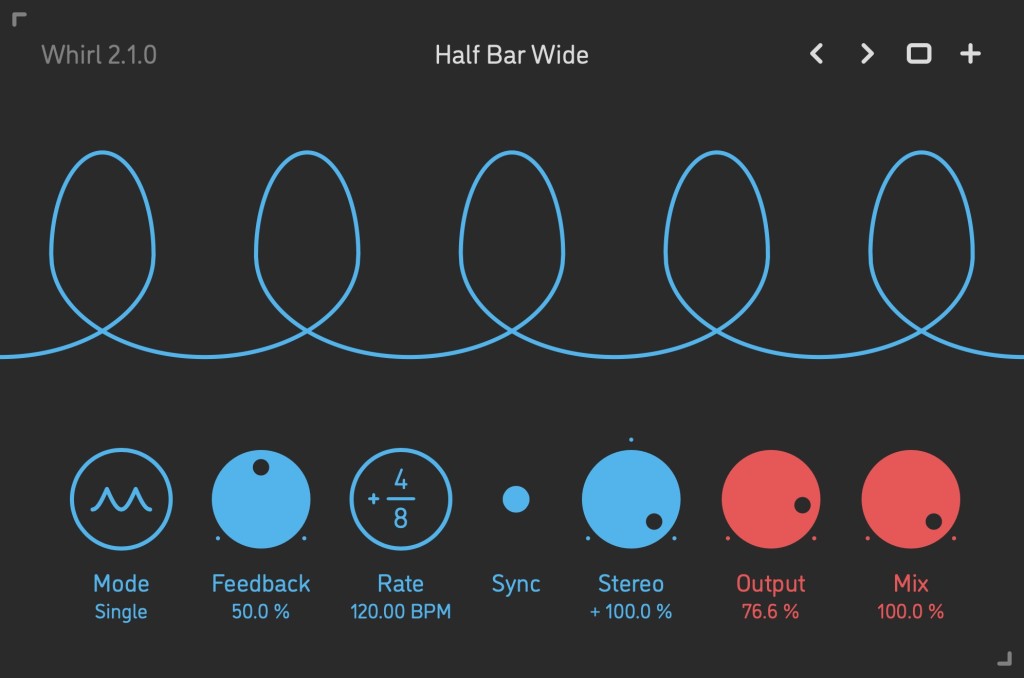Whirl, the delightful barber-pole phaser effect (and its seemingly endlessly swirling peaks) now has added two crucial features: syncable frequency, and bidirectional stereo width. That makes this already terrific and accessible effect tool even more useful.
Whirl takes on the legendary Bode hardware – “based on a Bode frequency shifter model with a feedback line, an algorithm which creates unique spectrum peaks and notches that move upwards or downwards in a seemingly endless fashion – with one spectrum sweep smoothly morphing into the next one, like an audible illusion.”
New in version 2.10, out today, are some new key features:

Sync. You can set that phaser frequency as a fraction of your host tempo – from 1/16 note all the way to a whopping 16 bars. Phase motion is also synced to transport location, which is critical.
This is huge and – hope we see it soon in other Sinevibes plug-ins.
Stereo is now bipolar, so right and left motion cross your whole stereo field as the phaser runs.
There’s also a new backend, built on JUCE 7 and with improved preset management, plus other UI enhancements.
KORG hardware owners, see also Sinevibes’ hardware Whirl (plus a Shift, if you prefer), though without the sync option.
Full specs:
- Barber-pole phaser based on Bode frequency shifter, with up to three sequential stages and progressive feedback
- Frequency can be set in Hz or as host tempo fraction with precise transport location sync
- Variable bipolar stereo phase offset
- Lag filters on all continuous parameters for smooth, click-free adjustment
- Supports mono › mono, mono › stereo, and stereo › stereo channel configurations
https://www.sinevibes.com/whirl/
And some demos:
There’s good reason to have more than one of these in your arsenal, especially as the implementations and interface approaches vary widely. (I’d say there are advantages to trying both a modern software approach and something that works like the original hardware.) Also worth checking:
Valhalla Freq Echo is free and has delay sync.
Sonic Charge Echobode is really the closest to emulating the original hardware, and gives you both time and frequency sync.
For Ableton Live users, I recently wrote up a free Max for Live device (based in turn on Teenage Engineering’s implementation, which was also created by Sonic Charge/Magnus Lidström) and compared Ableton’s own Shifter. And I dig into a bit of the history.
I will say, though: note that both Magnus and Sinevibes’ Artemiy Pavlov have adopted a simplified, performance-friendly approach in their designs – Magnus for the OP-1 hardware and Artemiy for both this plug-in and the KORG hardware. That’s worth considering as we see platforms like the KORG or Ableton Push. It’s a chance to imagine if you can create an interface that works well with fewer controls.
All this looping around…